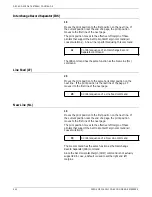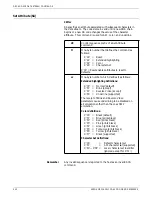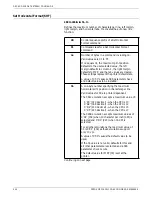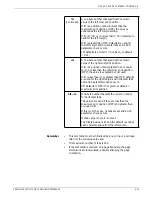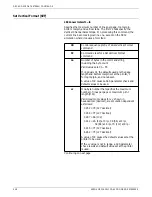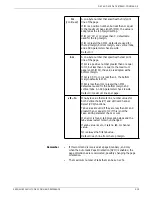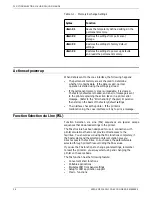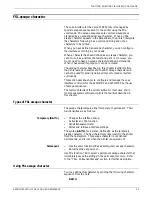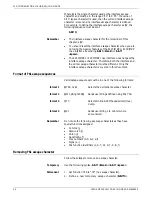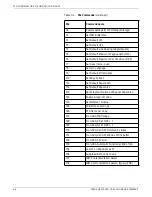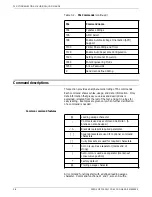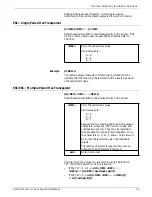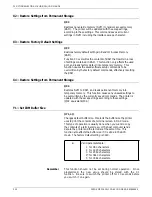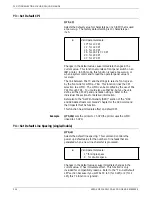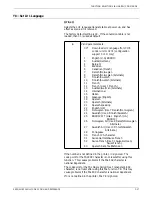
FUNCTION SELECTION VIA LINE (FSL) COMMANDS
Table 3-1. Memory Exchange Settings
Syntax
Function
<Esc>X1
Saves the temporarily defined settings in the
permanent memory.
<Esc>X2
Restores the settings from permanent
storage.
<Esc>X3
Restores the settings to factory default
settings.
<Esc>X4
Restores the settings to power up defaults,
and reads the permanent memory.
Actions at power up
When data is sent to the coax interface, the following happens:
•
The permanent memory area is checked to determine
whether it contains data. If the data is valid, normal
operation is started using the settings just read.
•
If the permanent memory area is unreadable, it is cleared.
The factory defaults are loaded, and an error message is sent
to the printer explaining the action taken in a printer error
message. (Refer to the “Error handling” chapter.) Operation
then starts on the basis of the factory default settings.
•
The interface checks the printer. If the printer is
malfunctioning, the coax interface will try to print a message.
Function Selection via Line (FSL)
Function Selection via Line (FSL) sequences are special escape
sequences that download settings to the printer.
The FSL structure has been designed for use in connection with
printer emulations that do not provide direct access to the
facilities. You should avoid using the FSL functions completely, if
the host system and the selected printer emulation give you
direct access to the facilities. In such cases, the parameters are
selected through printer files overriding the FSL values.
If you use the FSL functions to change printer settings, remember
to reset the printer so you always start using and changing the
printer on the same basis.
The FSL function has the following feature:
•
Convenient short functions
•
Portable applications
•
Emulates IBM front panel settings
•
Setup for IBM application support
•
Macro functions.
3-2
XEROX MRP FAMILY COAX COMMAND REFERENCE

